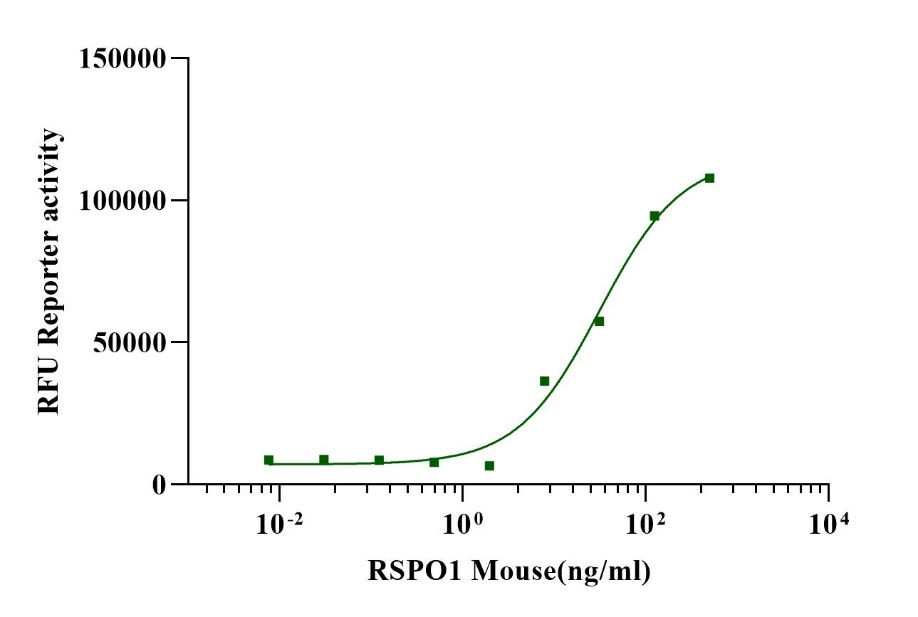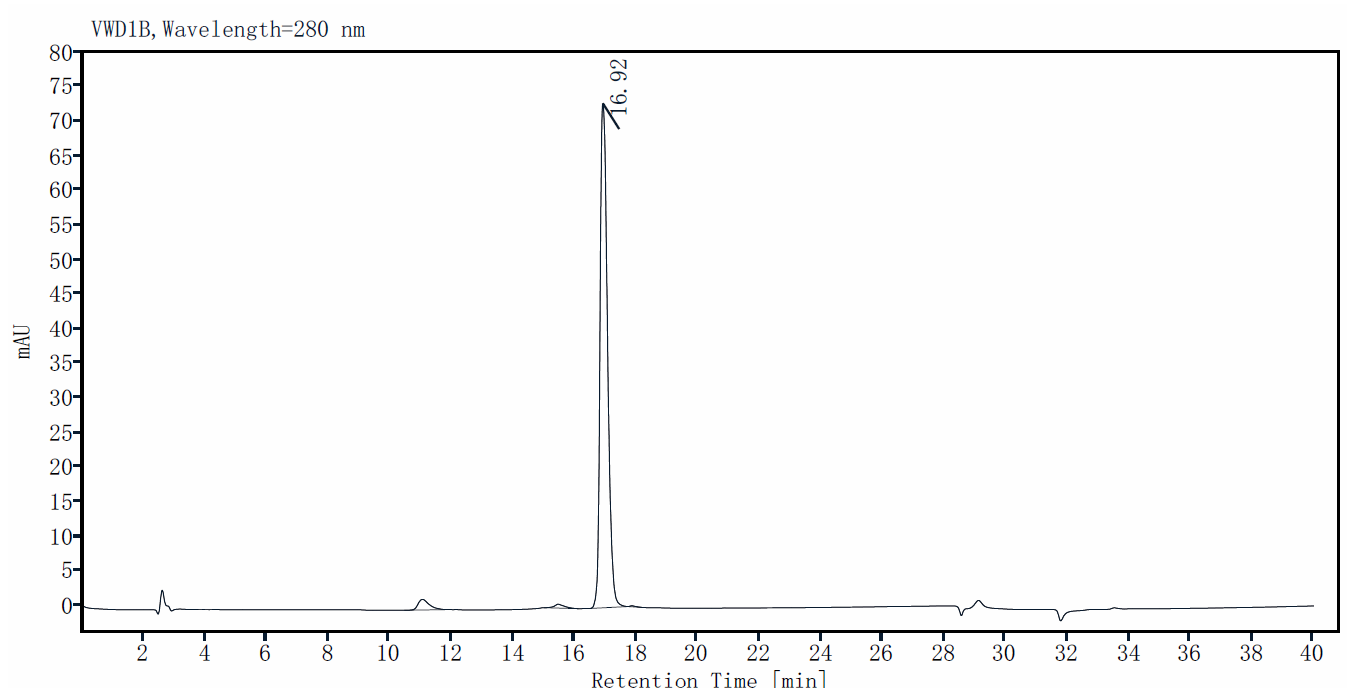Ser21-Gln265, with C-terminal His Tag
27-30kDa (Reducing)
PBS, 5% trehalose, PH7.4
Reconstitute at 0.1-1 mg/ml according to the size in ultrapure water after rapid centrifugation.
· 12 months from date of receipt, lyophilized powder stored at -20 to -80℃.
· 3 months, -20 to -80℃ under sterile conditions after reconstitution.
· 1 week, 2 to 8℃ under sterile conditions after reconstitution.
· Please avoid repeated freeze-thaw cycles.
1.Binnerts, M.E. et al. (2007) Proc. Natl. Acad. Sci. USA 104:14700.
2.Nam, J.-S. et al. (2006) J. Biol. Chem. 281:13247.
3.Wei, Q. et al. (2007) J. Biol. Chem. 282:15903.
4.Kamata, T. et al. (2004) Biochim. Biophys. Acta 1676:51.
5.Parma, P. et al. (2006) Nat. Genet. 38:1304.
R-Spondin 1 (RSPO1, Roof plate-specific Spondin 1), also known as cysteine-rich and single thrombospondin domain containing protein 3 (Cristin 3), is a 27-30 kDa secreted protein that shares ~40% amino acid (aa) identity with three other R-Spondin family members. RSPO1 is a secreted activator protein with two cystein-rich, furin-like domains and one thrombospondin type 1 domain. R-Spondin 1 is expressed in early development at the roof plate boundary and is thought to contribute to dorsal neural tube development. Injection of recombinant R-Spondin 1 in mice causes activation of beta-catenin and proliferation of intestinal crypt epithelial cells, and ameliorates experimental colitis. Interest in R-Spondin 1 as a cell culture supplement has grown with the expansion of the organoid field. R-Spondin 1 is widely used in organoid cell culture workflows as a vital component that promotes both growth and survival of 3D organoids.

Measured by its ability to induce Topflash reporter activity in HEK293T human embryonic kidney cells. The typical EC50 is less than 40ng/ml in the presence of 5ng/ml Recombinant Human Wnt3a.
1μg (R: reducing condition, N: non-reducing condition).
